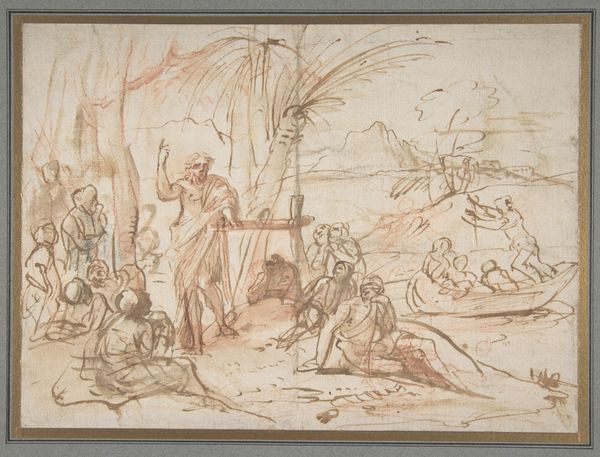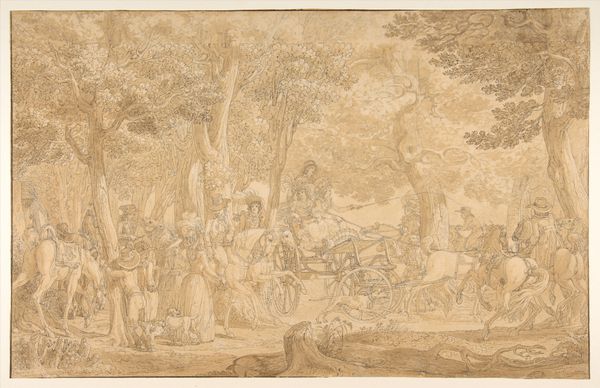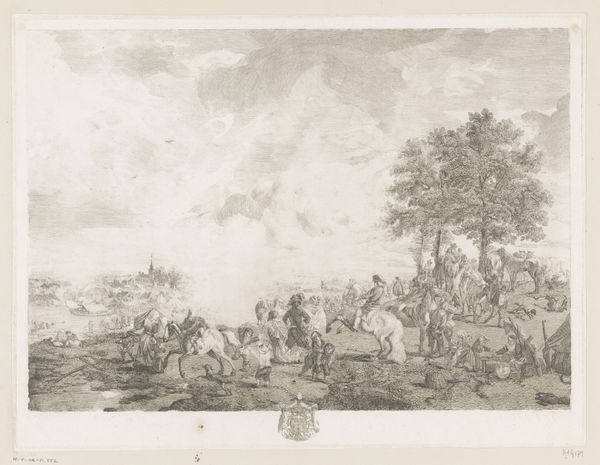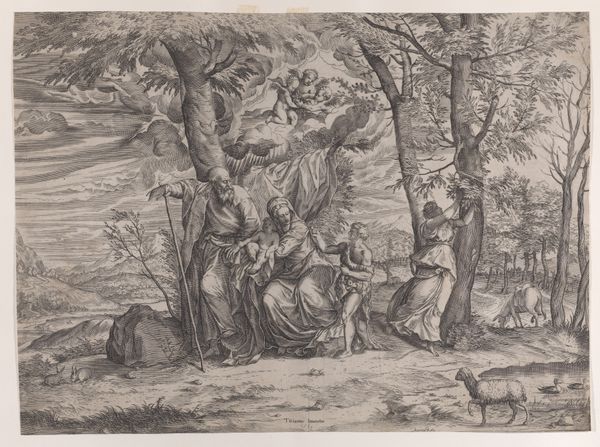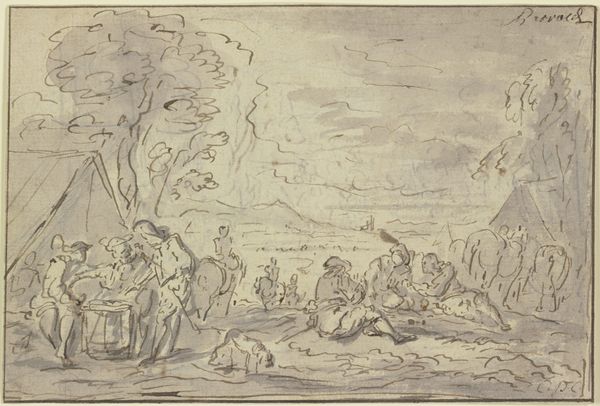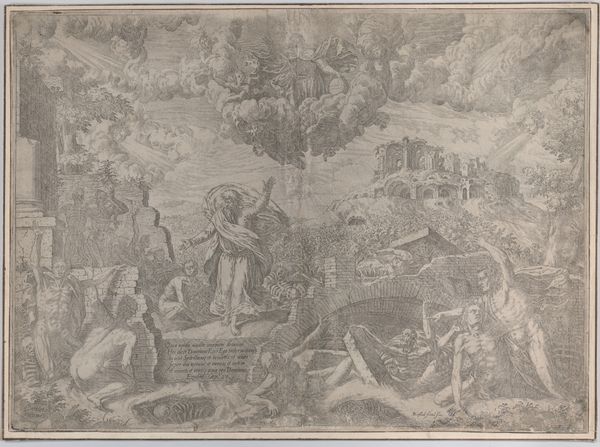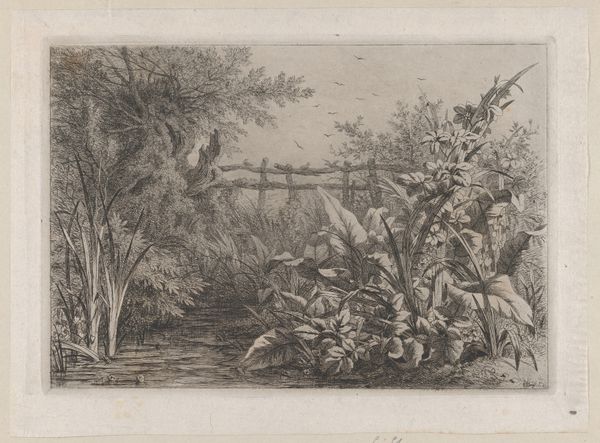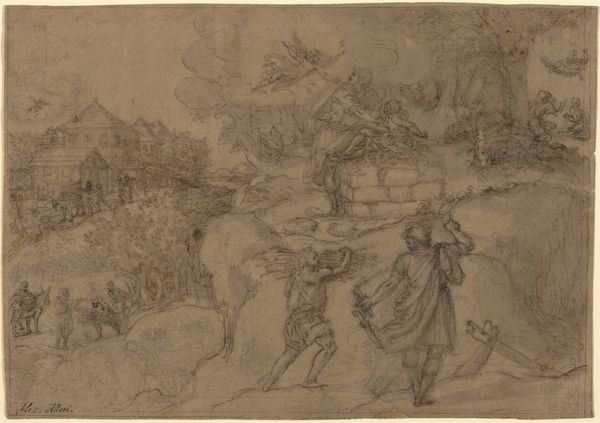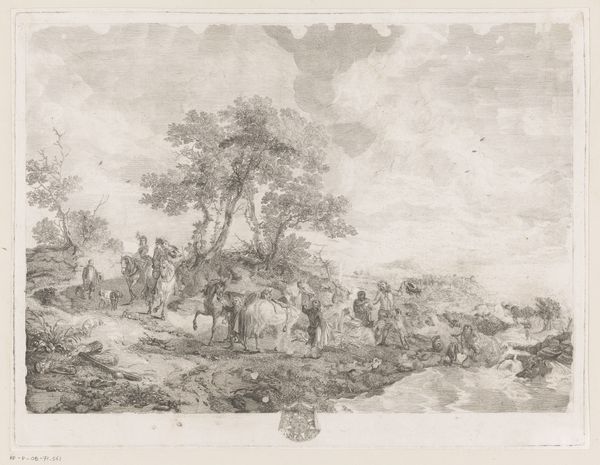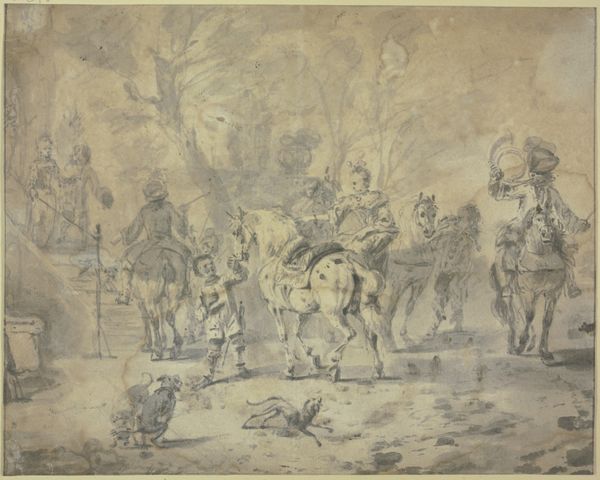
drawing, print, watercolor, ink
#
drawing
#
water colours
#
baroque
#
ink painting
# print
#
landscape
#
watercolor
#
ink
#
child
#
underpainting
#
genre-painting
#
history-painting
#
watercolor
Dimensions: 16 15/16 x 22 5/16 in. (43 x 56.6 cm)
Copyright: Public Domain
Curator: Welcome! Today, we’re looking at an ink and watercolor drawing from around 1700-1800, entitled "Summer," held at the Metropolitan Museum of Art. Editor: My first impression is that of a hazy, slightly melancholy scene. The cool blue wash dominates, muting the other colors and giving it a somewhat somber tone despite the purported theme of 'summer'. Curator: Absolutely. Though rendered with delicate watercolor, this 'summer' scene depicts laborers and travellers rather than leisure. What emerges when we look through a lens of labor exploitation during that era? How does the seemingly pastoral aesthetic mask these social and economic realities? Editor: The medium itself raises interesting questions about labor. Watercolors, ink and print -- each involving different types of skill, production, and availability. Was this meant to be accessible, reproducible? How did its creation participate in larger networks of material exchange and value during this period? Curator: Good point! And how does it comment on gender roles? Note how the figures break from clear distinctions—the gender fluidity expressed in the clothing and labor really stand out for the period. What societal anxieties around prescribed roles could be at play? Editor: Now that you point that out, I’m more struck by the ambiguity and possible blending of those roles. Seeing it that way makes the central grouping with the mother and child even more complicated—maybe an indictment of such roles? What about that overloaded cart though—the tangible materials are nearly breaking under the weight. Curator: Exactly! Its materiality feels like a heavy commentary— summer should evoke feelings of rest but instead it focuses on labor and struggle! Editor: And the implications resonate through art history— how later artists wrestled with these same problems through their choice of subjects, or even mediums! Curator: For me, what lingers is how "Summer," at first glance bucolic, hides layers of complex questions around labor, identity, and the societal norms. Editor: It certainly urges us to look beyond idyllic surfaces into the economic machinery that drives the picture, and think about the networks sustaining it all.
Comments
No comments
Be the first to comment and join the conversation on the ultimate creative platform.
